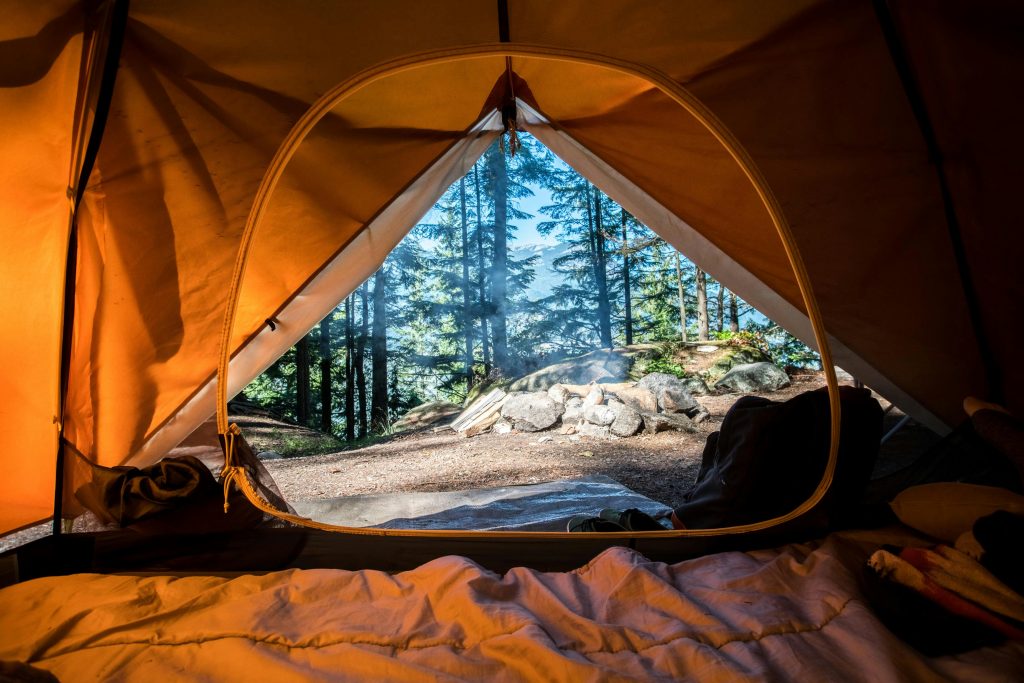Camping in the winter transforms the world into a quiet, magical landscape. But to safely enjoy the serene beauty of snow-covered forests and crisp, cold air, your shelter is your most critical piece of gear. A standard summer tent won’t protect you from winter’s harsh conditions.
This guide will walk you through everything you need to know to choose the right winter tent, ensuring your cold-weather adventures are memorable for all the right reasons.

Why a Winter Tent is Different
Winter camping demands a specialized shelter. Unlike 3-season tents designed for spring, summer, and fall, true winter tents, or 4-season tents, are built to handle the unique challenges of cold weather:
- Strong Winds: They feature robust poles and aerodynamic designs to resist powerful gusts.
- Heavy Snow Load: Sturdy structures and steep walls prevent snow from accumulating and collapsing the tent.
- Moisture Management: They excel at keeping external moisture (snow, ice, rain) out while minimizing internal condensation from your breath.
Key Features to Look for in a Winter Tent
When shopping for a tent to face the elements, prioritize these essential characteristics:
1. Season Rating: 4-Season is Non-Negotiable
Always choose a tent marketed as a 4-season tent. These are specifically engineered for winter conditions, with more durable materials and stronger frames than 3-season models . They provide the necessary protection against snow, wind, and cold that other tents cannot.
2. Weatherproofing and Waterproofing
Staying dry is paramount to staying warm.
- Hydrostatic Head (HH): Look for a high waterproof rating, measured in millimeters (mm). A minimum of 3000mm HH is recommended for the rainfly and floor, with higher ratings (5000mm+) offering better protection in severe weather .
- Full-Coverage Rainfly: A rainfly that extends to the ground offers superior protection from wind-driven snow and rain.
- Taped Seams: All seams should be fully taped to prevent water from seeping through the stitch holes.
3. Design and Structural Strength
The tent’s shape and skeleton determine its stability.
- Aerodynamic Shape: Geodesic or semi-geodesic dome designs, with multiple poles that cross over each other, offer exceptional wind stability and shed snow effectively .
- Pole Quality: Aluminum alloy poles (such as the 7001 series) are the gold standard for winter tents. They are significantly stronger and more reliable in cold temperatures than fragile fiberglass poles .
4. Ventilation and Condensation Control
While keeping the cold out is important, managing the moisture you produce inside is equally critical. Poor ventilation leads to condensation, which can dampen your gear and make you dangerously cold.
- Ventilation Features: Look for tents with adjustable vents high on the rainfly or inner tent. This allows warm, moist air to escape while letting fresh, cold air in .
- Double-Wall Construction: Most 4-season tents are double-wall, with a breathable inner tent and a waterproof outer rainfly. This design helps reduce condensation by creating a buffer zone and allowing moisture to pass through the inner wall .

Top 2025 Winter Tent Picks from Amazon
Based on user reviews and key specifications, here are three excellent tents to consider for your winter adventures.
1. Naturehike Cloud UP 2 4-Season Tent
A fantastic balance of weight, weather resistance, and price, making it a great entry into 4-season camping.
- 👍 Pros:
- Lightweight & Packable: Weighing around 1.67 kg, it’s a top choice for backpackers who need to move fast and light .
- Strong Weather Resistance: Features a PU 4000mm waterproof rating and durable 7001 aluminum alloy poles, which users confirm handle windy and wet conditions well .
- Easy Setup: Freestanding design and color-coded poles make it relatively quick to pitch, even with cold hands.
- 👎 Cons:
- Cozy for Two: Some users note the space is a bit tight for two people with all their winter gear.
- Ventilation Could Be Better: In very humid conditions, ensuring adequate airflow requires careful management of the vents.
> > Check the Naturehike Cloud UP 2 on Amazon
2. TETON Sports Mountain Ultra Tent
Built with durability and space in mind, this tent is a reliable shelter for basecamp-style winter trips.
- 👍 Pros:
- Spacious Interior: With a dome design, it offers generous headroom and floor space, comfortably fitting occupants and their gear .
- Durable Build: Users praise its robust construction and effective 360-degree ventilation system, which is crucial for reducing frost inside the tent .
- Great Stargazing: The full mesh top (with rainfly removed) is a beloved feature for clear nights.
- 👎 Cons:
> > Check the TETON Sports Mountain Ultra Tent on Amazon
3. Mountainsmith Cottonwood 6-Person Tent
An excellent choice for group winter camping or for families who want extra space without breaking the bank.
- 👍 Pros:
- Massive Interior Space: Easily fits multiple occupants with gear, or offers a luxurious amount of room for one or two. The 90+ square feet of space and over 6-foot peak height are highly appreciated .
- Proven Weather Resistance: Numerous reviewers report staying perfectly dry during relentless rain and storms, thanks to its full-coverage rainfly and bathtub-style floor .
- Great Value: Often available at a discounted price, providing a lot of tent for the money.
- 👎 Cons: